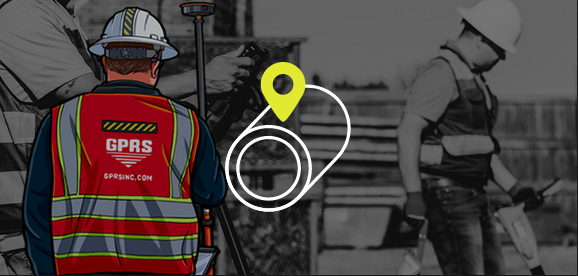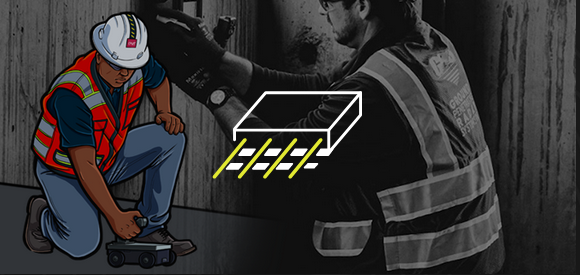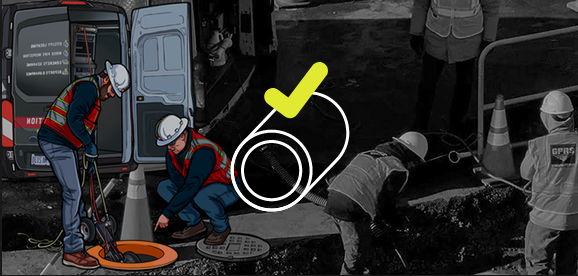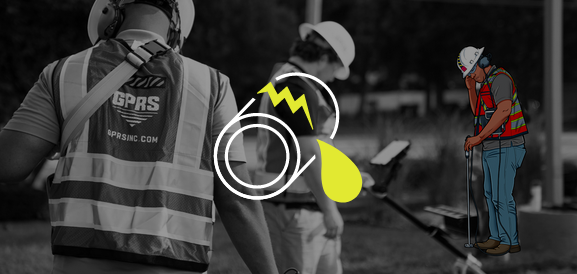Locating Gas Lines
Call A Private Utility Locator Before You Dig
You want to locate a gas line underground?
Natural gas is used for heating, hot water and cooking among other uses. Pipes carrying natural gas can range in size and material. Most piping used for natural gas lines is made of conductive material, making it more easily identifiable in a GPR scan.
Questions and Answers
FAQs about locating underground gas lines, about how to find and detect buried gas lines, and who can help locate gas lines.
What happens if you hit a buried gas line?
Gas lines are among the most dangerous buried utilities. Gas leaks can occur with even the smallest amount of damage, and are not always easy to identify since natural gas is odorless, tasteless, and colorless. It’s typically laced with a compound that gives it its distinctive Sulphur smell for identification. A damaged gas line can lead to gas buildup within the area, but can also back up further down the line. Gas is highly flammable and something as small as a spark from a cellphone could lead to a major explosion. When dealing with potential gas leaks it’s important to immediately evacuate the area in order to prevent death or injury.
How can GPRS help you locate buried gas lines?
GPRS is skilled at using ground penetrating radar (GPR) to locate all types of buried utilities. The GPR equipment sends a signal into the ground, bouncing off of buried material to create a reading. This reading is used to determine approximate depth and location of the utility or material in question. Ground penetrating radar is a non-destructive solution to locating buried utilities.
GPRS Project Managers undergo rigorous training and are top in the field of private utility location. However, it is not always easy to distinguish between different types of utility readings. If there are any doubts about the type of material located, the signal can be traced back to its source- in this case a potential gas line could be traced back to a meter. If there is still confusion about the type of utility, the elevation of the buried utility is cross-checked with any existing plans. It is our job to take the guess work out of your excavation and we do everything possible to ensure that this happens.
How accurate are the GPR readings?
GPRS project managers are skilled at using GPR equipment to identify the location of buried utilities. We have an accuracy within 6 inches to the center of the utility, and a depth accuracy at +/- 10-15%.
How will I know where to dig?
Our Project Managers will walk you through their findings, ensuring you have a clear understanding of the location of buried sewer lines. All findings are carefully marked out on site- we typically use spray paint and survey markers for projects which are underway. A detailed GPS map or AutoCAD drawing can be compiled in order to preserve this information for future use.
We Provide Utility Locating Services Near You.
Chose one of our Subsurface Services:
Utility Locating
Locating and avoiding any underground utility lines, public or private, beneath the construction site.
Concrete Scanning
To locate utilities and structural elements embedded in concrete.
Video Pipe Inspection
Identifying the cause of a sewer line or pipe issue.
Leak Detection
Highly recommended to reduce the need to dig out the ground or remove structures to inspect pipes physically.

Need To Locate Gas Lines? Call Us.
Underground private utility locating is critical to any construction project where subsurface excavation is planned. GPRS offers ground penetrating radar, video pipe inspection, as well as mapping and modeling services. Our Project Managers have the skills and equipment to handle any subsurface challenges.
Don't wait. To schedule a project with GPRS, click here. Our highly trained Project Managers will keep your project on time, on budget, and safe.








